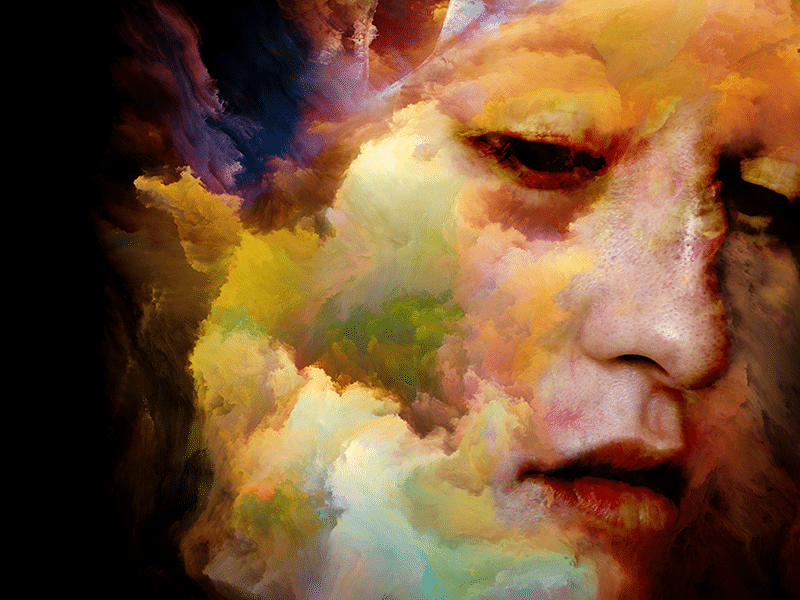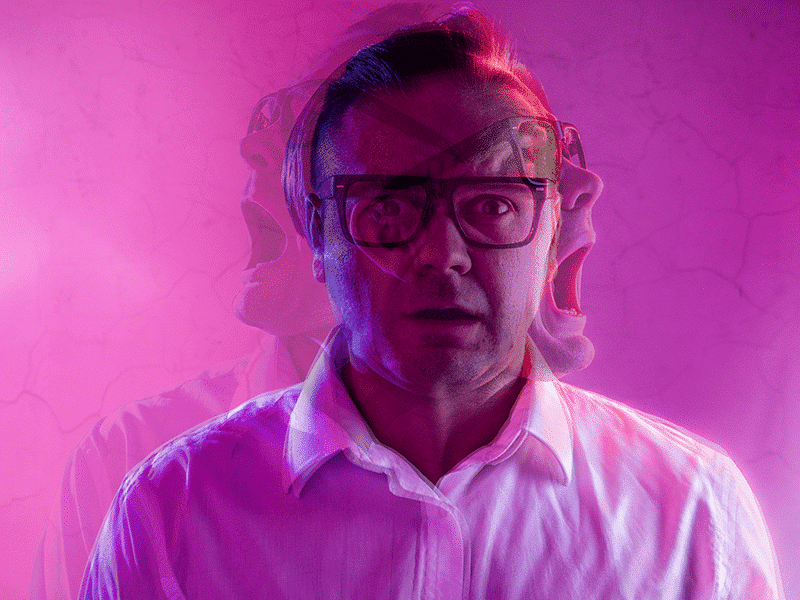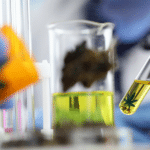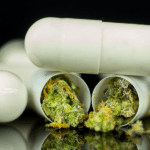We are living in a time when truth can be obscured by all manner of conspiracy theories. Alluring messaging that plays to preconceptions can be either blatantly or insidiously wrong. As I write this in the immediate wake of the 2020 elections, political candidates and parties are pointing left and right to the dangers of misinformation. In a refreshing twist, however, decisive ballot victories keep piling up for a winner that has endured far more conspiracy theory than any candidate or political party.
That undisputed winner is cannabis! And the diehard misinformation campaign is defined by the entrenched fallacy of “reefer madness”— the accusation that using cannabis leads to schizophrenia or similar diseases of psychosis.
I am happy to report that as the US grappled with election week anxieties, a very interesting new breakdown on the correlation between cannabis and schizophrenia appeared in the prestigious journal JAMA Psychiatry. It is a welcome injection of sanity into the scientific literature on this subject, which I have studied for over 20 years.
Entrenched Prejudice
There remains an entrenched (although now fading) prejudice toward cannabis, having been branded as a slippery slope into psychotic illness. It is important to approach that backdrop with an open mind. As is probably the case with any successful conspiracy theory, the pointed notion that cannabis-causes-insanity found traction because there are grains of face-value believability to it.
Cannabis is a powerful psychoactive substance, even arguably hallucinogenic after heavy consumption. Cannabis has been used successfully as medicine for ages, but not without warnings of its potent effects. To the crux of the argument, it is also true that many young people use cannabis prior to subsequently developing schizophrenia (yes, the same can be said for tobacco), which is a disease that typically manifests in the mid-to-late 20’s.
We know this because in scientific studies, cannabis use has been repeatedly associated with higher incidence of schizophrenia. This is both true and important. Maybe the correlation is worrisome enough to justify warning labels and age restrictions. Or is it more than that? Is it a causal relationship that justifies some version of the reefer madness messaging that formed the bedrock of 20th-century anti-cannabis propaganda? This core problem — that correlation does not prove causation — has been pointed out by many others to diffuse the journalistic impact of those who still preach the fear stories.
Alternatively, the association is possibly caused by confounds such as underlying genetic risk factors, or from cannabis experimentation co-occurring with other environmental stressors that influence disease risk. In this kind of scenario, a latent predisposition to schizophrenia may in some cases be hastened by cannabis use, but not independently caused by it. This could make it seem like cannabis is more of a danger than it is, lurking to poison the minds of otherwise healthy youth.
“Hijacking the Brain”
The popular narrative has been biased for generations to envision a direct causality, and so has NIH-funded research. Cannabis has been viewed as “hijacking the brain,” which is a language long used to discuss any recreational drug, but with marijuana having the special property of spiraling the brain into madness.
True science, however, challenges its own prevailing assumptions. Objective research demands being open to the observation that the real world seems more nuanced. After all, whereas the use of potent cannabis has become much more common in recent decades, and while this is often cited as a red flag to expect imminent public health consequences, if rates of schizophrenia have changed in response, it has not been observed to date.
Teasing this out is possible. As I have covered in some of my talks, genetic and brain imaging research methods have gotten more powerful, and are applied intensively to the study of cannabis as a potential risk to brain health. Multiple studies have investigated the causality question, and even a systematic review has been conducted on how genetic factors may influence the cannabis risk for psychosis (van der Steur, 2020).
Importantly, at least two high quality studies, by Gage (2017) and Passman (2018), conclude that there is likely to be a reverse causality — suggesting that a genetic/psychiatric predisposition to schizophrenia could make it more likely for a person to gravitate toward using cannabis, thus driving a statistical association.
This could be for whatever reason, but quite possibly because it feels therapeutic to the pre-schizophrenic individual. Schizophrenia often has a “prodromal” onset, in which patients experience the so-called “negative symptoms,” such as blunt affect, apathy and anhedonia for a period of years prior to having an initial psychotic episode (Messias et al, 2007). Other studies have confirmed that many schizophrenic individuals do indeed use cannabis to self-medicate, and primarily for management of negative symptoms (Schofield et al, 2006).
It only makes sense that cannabis could similarly become appealing to prodromal individuals, who are not yet diagnosed with schizophrenia. Ironically, using cannabis to improve their perceived quality of life might speed up the onset of their disorder, and this is an important possibility to research and understand.
Reverse Causality
That is a very different proposition than cannabis itself being some kind of schizo time bomb to the other 99% of the population that will never in their lives be psychotic. It is important for the record to be clear that this reverse causality hypothesis — in the direction of psychosis risk enhancing cannabis use, rather than the other way around — is well grounded scientifically and should influence how the entire body of research is interpreted. It should diffuse the kind of fear mongering that has historically dominated anti-weed propaganda and is still quite active today.
Pot-makes-you-crazy social programming has permeated cultural narratives toward cannabis, having been disseminated mostly from powerful, non-scientist historical influencers like Harry Anslinger, Richard Nixon and Ronald Reagan. Surely none of these men ever imagined the scientific view of cannabis use that has emerged in the 21st century: that it is a natural behavior driven by pharmacological modulation of the human endocannabinoid system, which is inherently (albeit not always) therapeutic (see Aggarwal, 2013).
Ballot outcomes in multiple states continue to show how bipartisan public opinion strongly favors cannabis legalization. Medical cannabis programs are well established and successful in many jurisdictions. Even so, legislators in some already-legal states have recently attempted to forbid cannabis containing >10% THC, claiming that science has proven that a failure to do so will surely cause schizophrenia rates to skyrocket!
The fears underlying these actions were stoked by a 2019 study that linked the use of potent cannabis to singular, first-time episodes of psychosis (Di Forti et al, 2019). That study employed specious methods to arbitrarily define a 10% THC threshold as “high potency,”* but it was wildly politicized, even by the authors themselves. Like so many others, the findings actually only show a correlation that can be confounded by other factors, perhaps even a reverse causality genetic risk.
In my opinion, failing to understand and cite this evidence amounts to spreading a debunked and harmful conspiracy theory.
Risk Factors
Enter the timely and interesting new research viewpoint by Gillespie & Kendler (2020), published in JAMA Psychiatry. The authors carefully and succinctly analyze all of the existing studies that have considered genetic linkage alongside the cannabis-schizophrenia question. They conclude that there is clearly enough evidence to show that genetics and other risk factors are at play, confounding the issue and pushing the association. They squarely reject what they call “hypothesis 1,” the idea that a pure causal relationship exists in which cannabis triggers schizophrenia in someone who is not otherwise at risk.
This will be unsurprising to many, for all the reasons I’ve mentioned, yet it needs to be emphasized. Bolstering rational models — and dismissing the simplistic or prejudiced ones — with rigorous, peer-reviewed scientific analysis is important at a time when cannabis policy reform shows no sign of stopping.
In their words, Gillespie & Kendler “prudently” suggest that “an appreciable proportion of the association [between cannabis and schizophrenia] is not causal,” and that “claims made about the changes in risk for schizophrenia stemming from changing levels of cannabis use are very likely to be exaggerated and potentially substantially so.” While the authors do not assert that there is no causality at play, they rightly point out the evidence suggesting that it may be more in the reverse direction, supporting those findings with clear and concise statistics.
Many decades have passed since reefer madness propaganda first influenced US federal law into a dark age of cannabis prohibition. Biomedical science continues to show, however, that the evidence is far less damning than a smoking gun. There are complex risk factors for schizophrenia, and cannabis unfortunately interacts with them in ways that are not yet well understood. Research will hopefully lead to greater predictability and science-based approaches to education and prevention. This should include pharmacovigilance research supported by the cannabis industry itself.
For now, when there is family history of the disease, high-THC cannabis should be approached with the utmost caution or outright avoided. It indeed might promote the onset of psychosis in such populations. However this is likely to be the extent of causality supported by biomedical science, so translations into public health policy should be appropriately reserved.
Greg Gerdeman, Ph.D. is a neuroscientist and educator who explores the endocannabinoid system and the biological human-cannabis relationship. He discloses financial interests as a professional scientist and consultant in the legal medical cannabis and hemp industries. Copyright, Project CBD. May not be reprinted without permission.
Footnote
*This comment merits an extended footnote because the Lancet article by Di Forti and colleagues (2019) boldly speculates that cannabis is a major factor contributing to psychotic disorders. The paper has a large number of physician and scholar authors (including paid advisors to pharmaceutical makers) due to its design as a multi-site clinical research study. Because of having sites in numerous countries, it also displays funding sources from many national research institutes. All this adds up to a look of great prestige, which can be more politically influential than the complicated details of the science itself. In this case, many tables of complex statistics are required to make the authors’ over-reaching arguments. Some of the underlying questionable methods are only obvious if you scrutinize the online supplementary materials appended to the article and references therein. One primary concern is how the authors estimated the potency of cannabis products that were used preferentially by patients who turned up at participating clinics with a psychotic episode. They relied first of all on colloquial descriptions of what the patients report to use: such as hash, “skunk” or “homegrown” (in various home languages). Then, these were correlated to national police records of what that kind of material generally contains in that country, in terms of THC content. So for example, hashish in Brazil was scored as low potency (<10%), while in Spain it was considered high (>10%). Someone reporting that they liked to smoke “skunk” or “homegrown” in London counted them as a high-THC user, while a different Brit would be tallied in the low-THC column if they claimed to smoke hash or imported weed (umm… did imports from Colorado count?)! Again, all of this was based on what federal authorities say is typical of confiscated products matching that description within their jurisdiction. It is well worth noting — only discoverable when you really chase down the sources within references — that some of those reference values dated back 15 years or more (i.e., the THC content of Brazilian hash confiscated in 2004)! The high-low boundary of 10% was completely arbitrary, but has been used by politicians as though a scientifically supported threshold. Anyone who understands the issues of cannabis analytical testing realizes that it is a science that relies on careful, validated protocols for accuracy. Sending the exact same cannabis to multiple labs often reveals significant differences in the %THC reported. The editors of the Lancet apparently did not understand this. Di Forti and colleagues claim that their methods are more reliable than simple self-report by the patient, whereas I submit that they are probably worse. If US labs in 2020 have accuracy problems despite being dedicated to cannabinoid detection, I put no stock whatsoever in the accuracy of historically dated government lab tests of confiscated weed in other countries, where no validated method is presented to scrutinize. The end result is just one more study that associates heavy cannabis use with — in this case not even schizophrenia, but a single first episode of psychosis. The question of causality was not at all proven, yet these authors were given artistic license to build on that assumption of causality, using the pages of a reputable medical journal to guesstimate how much psychosis around the world can be blamed on the 10% reefer. It has promptly fueled new rounds of prohibition politics.
References
- Di Forti, M et al. The contribution of cannabis use to variation in the incidence of psychotic disorder across Europe (EU–GEI): a multicentre case-control study. The Lancet Psychiatry. 2019; 6(5): 427 – 436. https://doi.org/10.1016/S2215-0366(19)30048-3
- Gage SH, Jones HJ, Burgess S, et al. Assessing causality in associations between cannabis use and schizophrenia risk. Psychol Med. 2017;47(5):971-980. doi:10.1017/S0033291716003172
- Gillespie NA, Kendler KS. Use of Genetically Informed Methods to Clarify the Nature of the Association Between Cannabis Use and Risk for Schizophrenia. JAMA Psychiatry. Published online November 04, 2020. doi:10.1001/jamapsychiatry.2020.3564
- Messias EL, Chen CY, Eaton WW. Epidemiology of schizophrenia: review of findings and myths. Psychiatr Clin North Am. 2007;30(3):323-338. doi:10.1016/j.psc.2007.04.007
- Pasman JA, Verweij KJH, Gerring Z, et al; 23andMe Research Team; Substance Use Disorders Working Group of the Psychiatric Genomics Consortium; International Cannabis Consortium. GWAS of lifetime cannabis use reveals new risk loci, genetic overlap with psychiatric traits, and a causal influence of schizophrenia. Nat Neurosci. 2018;21(9):1161-1170. doi:10.1038/s41593-018-0206-1
- Schofield D, Tennant C, Nash L, Degenhardt L, Cornish A, Hobbs C, Brennan G. Reasons for cannabis use in psychosis. Aust N Z J Psychiatry. 2006 Jun-Jul;40(6-7):570-4. doi: 10.1080/j.1440-1614.2006.01840.x. PMID: 16756582.
- van der Steur, Sanne J et al. “Factors Moderating the Association Between Cannabis Use and Psychosis Risk: A Systematic Review.” Brain sciences vol. 10,2 97. 12 Feb. 2020, doi:10.3390/brainsci10020097
Recommended Readings
CBD for Schizophrenia
Excerpted from “The Essential Guide to CBD” by the Editors of Reader’s Digest and Project CBD.
Two Hits for Schizophrenia
After over a century of failing to find a causal link between cannabis use and schizophrenia, proponents of Reefer Madness have had to couch their warnings.
Cannabis Use Protects the Gut in Schizophrenia
Researchers have found that cannabis users with schizophrenia experienced fewer gut-related issues.











